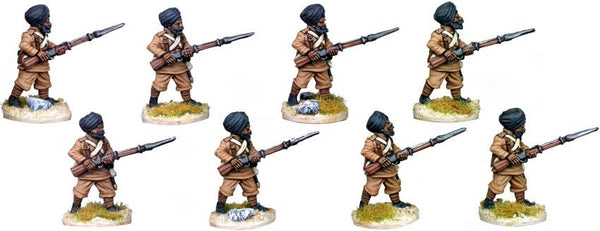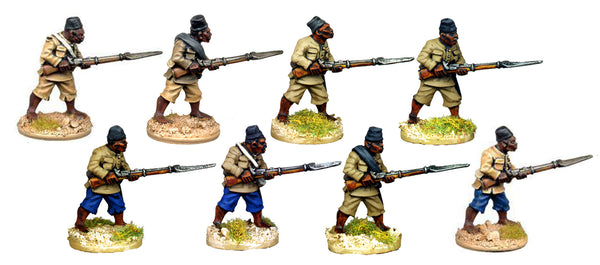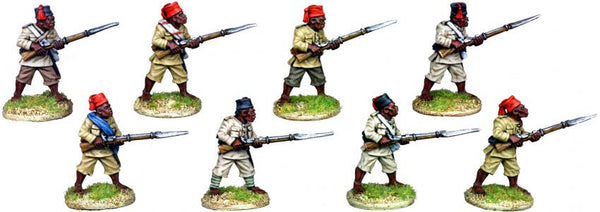Darkest Africa: The British In Victorian Africa
In the area around Lake Nyasa, first the British Lakes Company (much less grand than it sounds) and then the Central African Protectorate fought a series of battles against local slavers, both Arab and Yao, and unruly tribes. In the course of these campaigns the Company station at Karonga was besieged, Arab stockades attacked (sometimes unsuccessfully), dhows boarded and all manner of unlikely events occurred - all with eccentric British adventurers, stalwart Sikhs, plucky Jack Tars and Atonga Askaris.
The Royal Navy operating in the Indian Ocean and on Lake Nyasa kept a constant watch for slave carrying dhows, capturing them and freeing their cargo whenever possible, as well as burning slaver villages and on one occasion bombarding Zanzibar itself.
Askari units in British service were often given rather cosy-sounding names involving the term "constabulary" to give the impression that conquering Africa was merely an extension of policing Surrey.
We have a large number of customers fighting battles and skirmishes in historical, Victorian adventure, Steampunk or roleplay settings. using our Victorian Adventurers from the Darkest Africa range alongside the many hundreds of miniatures from our various African, Asian, Oriental and Victorian Historical ranges ( lots of appropriate models in the Old West ranges too ).
Officers - If not wearing the British army’s standard khaki drill and equipment, they tended to dress casually in shirtsleeves and trousers worn loose or with gaiters/puttees. Trousers and shirts could be pale khaki or white. Occasional public school or cricketing club ties.
Askaris - Based on the troops raised by the British around Lake Nyasa to fight the Arab slavers. They were dressed in khaki with black fezzes with (sometimes) black tassels . Other hastily raised units may have dressed in blue with red fezzes.
Sikhs - Dressed as regular Sikh units in Indian Army - khaki drill with brown leather equipment. The unit raised in Nyasaland had black turbans in full dress and may also have worn them in action in preference to khaki service pagris. The pag worn beneath the turban and visible at the front may have been red or white.






